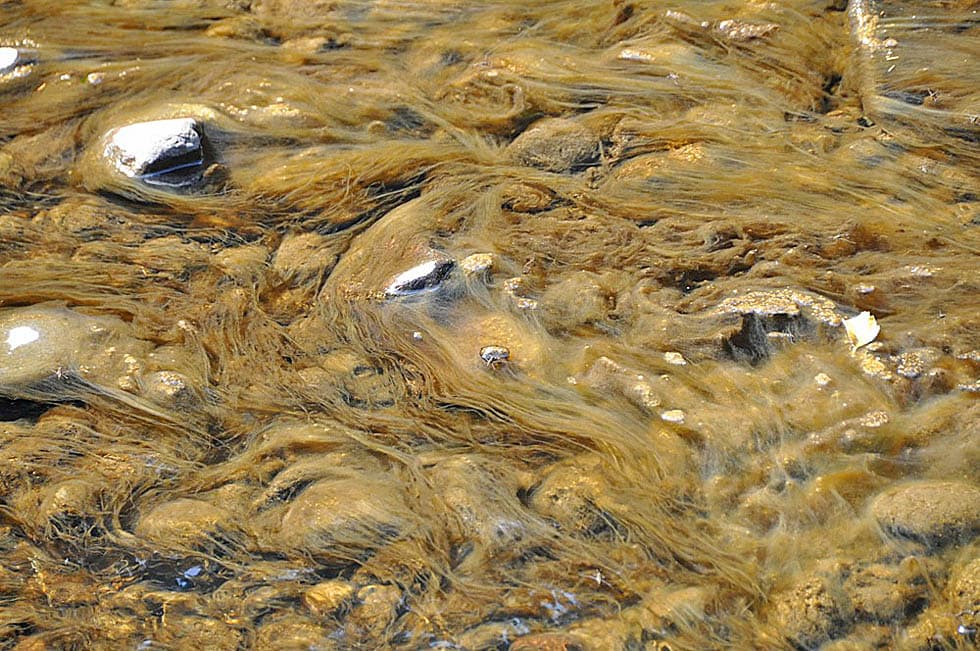
'Rock snot' algae no longer deemed invasive
‘Rock snot’ algae no longer deemed invasive A type of algae called “rock snot” that was thought to be an invasive species in the Northeast is actually native to the northern United States, researchers have concluded.
The aquatic algae, Didymosphenia geminata, has caused massive blooms in some U.S. rivers. Fishermen spotted it in rivers in Vermont in 2007, sparking alarm.
To fight the spread of rock snot and other organisms, Vermont and about a half dozen other states banned the use of felt-soled waders by anglers. But officials now say Vermont will lift its ban next month, apparently the first state to do so.
The Vermont Department of Fish and Wildlife said scientists discovered that the algae’s spores were present in many Vermont rivers and can cause nuisance algae blooms under certain conditions.
“The fact that we had a ban on something to avoid spreading something that was already where we didn’t want it to be spread didn’t make any sense,” said state biologist Shawn Good.
The algae, also known as didymo, are native to northern North America, Europe, and Asia, but research in recent years has shown that they are also indigenous to the northern United States, scientists say.’Rock snot’ algae no longer deemed invasive
It attaches to rocks in river bottoms and has been described as resembling a sewage spill. It prefers pristine, low nutrient rivers. In its early stages, it forms nubby brown growths on rocks and later develops a woolly texture.
Algae blooms aren’t new, but they seem to be happening more frequently in certain places and are more noticeable than they were historically, said Max Bothwell a research scientist with Environment Canada in British Columbia, who had initially suggested that anglers were spreading it. NASA
Bothwell, who has been studying didymo since 1993 and gave a talk in Vermont last fall, said the only demonstrated cause of blooms is due to low phosphorus levels in waterways. He and another researcher hypothesize that phospshorus is declining in rivers due to climatic warming and nitrogen-enriched soils, leading to more frequent blooms.
After Tropical Storm Irene inundated Vermont in 2011, fish were removed from the White River National Fish Hatchery in Bethel out of concerns that they may be exposed to didymo or pathogens.
Mary Russ, executive director of the nonprofit White River Partnership, said the group is disappointed that Vermont is lifting its ban on felt-soled waders, which she said can transport other organisms.
“We were thinking that it was a good management strategy,” she said.
While the waders may be used again on July 1, the Vermont Fish and Wildlife Department is urging anglers and others to clean and dry all equipment after leaving any body of water and before going to another one to prevent the spread of aquatic invasive species that can sicken fish.
© 2016 The Associated Press. All rights reserved. This material may not be published, broadcast, rewritten or redistributed. Learn more about our Privacy Policy and Terms of Use.












